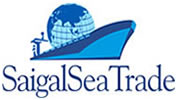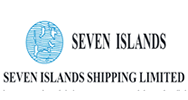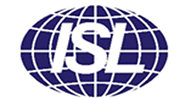Market watchers expect US to back little change to Russian oil price cap during review

An expected review of the price cap on Russian crude has renewed calls by some countries for a lower price threshold to ratchet up pressure on Russia as it continues its invasion of Ukraine, but energy analysts expect the US to push for maintaining the status quo as the cap is still in its early days.
A cap of $60/b was imposed on seaborne Russia-origin crude oil Dec. 5, as EU prohibitions on ships and other maritime services needed to transport that crude took effect. Crude shipments loaded before the cap went into place were given a grace period to unload by Jan. 19 without impunity if the oil onboard was purchased above the price cap.
The US Treasury Department advocated for price caps as a carve out for EU and G7 maritime service providers to continue aiding with the seaborne transport of Russian fuels as long as they are sold at or below the cap levels. Price caps on Russian petroleum products will begin Feb. 5.
“We believe that it is too early in the process for Treasury to support additional price intervention, when they see the current situation as working with respect to both criteria for success,” Height Capital Markets’ Benjamin Salisbury said in a Jan. 20 note.
Treasury has long held that its two goals were to squeeze the Kremlin’s oil export revenues and ensure the continued flow of Russian oil supplies to the global market.
Treasury Deputy Secretary Wally Adeyemo virtually met with deputy ministers representing the coalition of countries imposing the price cap Jan. 20, during which they agreed that the price cap was accomplishing those dual goals and laid out a plan for setting two distinct price caps for higher-value refined products like diesel and lower-value refined products such as fuel oil.
“As long as the price cap continues to meet the coalition’s dual goals, the deputies agreed to undertake a review of the level of the crude price cap in March,” Treasury said in a statement following the meeting. “This will allow the coalition to take into account developments in global markets after the refined products caps are implemented, as well as allow the coalition to be briefed on the results of the EU’s technical review of the crude price cap.”
Urals falls below $50/b
But Ukraine and some European countries want to squeeze Moscow’s revenues even more and believe they have a solid argument for lowering the current $60/b cap, which includes a mechanism for review every two months beginning in mid-January to respond to market developments.
“Ukraine is confident it’s time to review the oil price cap given the current market price on Urals is lower than 50 USD per barrel,” Ukrainian Minister of Foreign Affairs Dmytro Kuleba tweeted Jan. 19. “This decision should ensure a drastic reduction in Russia’s income to finance the war, mass atrocities, and destabilization in Europe and elsewhere.”
S&P Global Commodity Insights assessed Urals crude, Russia’s main export grade, at the Baltic Sea port of Primorsk at $46.93/b Jan. 20, a $39.05/b discount to Dated Brent.
Poland and Estonia are among other countries also pushing to lower the cap but all 27 EU member states would have to agree to the change.
The EU committed to ensuring that the cap remains at least 5% below the average market price for Russian oil as determined by the International Energy Agency, but so far it is unclear how the IEA will set that baseline.
The price decline in Urals to below $50/b occurred in the past few weeks and other grades of Russian crude such as ESPO, Russia’s Eastern-bound export crude, and Sokol, also produced in the country’s Far East, have maintained higher prices around $75/b, so the timeframe and crude grades relied upon will have a significant effect on the IEA’s determination of the market price.
An overtightening of the price threshold on Russian oil would carry bullish supply risk, analysts at Rapidan Energy Group said.
“A cap that is below recent market-clearing prices for Urals grade could cause Moscow to shut in some production rather than concede to Western strong-arming,” driving up oil prices and increasing Russian oil revenues, they said in a Jan. 20 research note. “If the cap is set higher than Urals, Russia is likely to continue maximizing exports to its remaining customers. Washington expects this second outcome — a price cap that remains well above recent Urals price (possibly unchanged at $60).”
Resilient Russian exports
During a Jan. 11 meeting of Russian government officials, Russian Deputy Prime Minister Alexander Novak told President Vladimir Putin that “difficulties” from the EU embargo and G7 price cap had not impeded overall volumes for crude exports and shipments.
“The contracting for February has been completed, and on the whole, companies are not reporting any contracting problems,” he said, according to a transcript of the meeting posted on a Russian government website.
Russian seaborne crude exports are at a six-month high in January, according to tanker tracking data, as initial concerns eased over shipping restrictions on Russian crude due to lower values for Moscow’s oil.
Russian-origin crude loadings from Russian ports averaged 3.18 million b/d during the first 17 days of January, up 534,000 b/d, or 20%, from December levels to hit their highest level since August, according to data from S&P Global Commodities at Sea.
OPEC recently said it expected Russian oil supplies to fall by just 850,000 b/d, outperforming the IEA’s estimate of a 1.5 million b/d decline.
And analysts at S&P Global last month expected Russian crude and condensate output to fall by 760,000 b/d between November and March, before rebounding 400,000 b/d by the fourth quarter. But recent data shows Russian output remained flat from November to December with expectations for the same in January.
“At this point, the US-led price cap policy has proven surprisingly effective at keeping oil on the market, despite EU import bans and G7 shipping sanctions,” according to S&P Global. “We will likely assume ~350,000 b/d of shallower losses in January, and raise our outlook for the rest of 2023, but risks persist over the fate of over 1 million b/d of clean product exports still reaching Europe.”
The main challenge to the Russian oil sector, Novak said, was the large discount to international crude benchmarks and high freight costs but he hoped it would be “a temporary situation.”
Putin, during the meeting, pressed for solutions to ensure that the discount did not “create any problems with the budget,” and instructed Novak to report back directly to him with proposals.
Source: Platts

































Comments